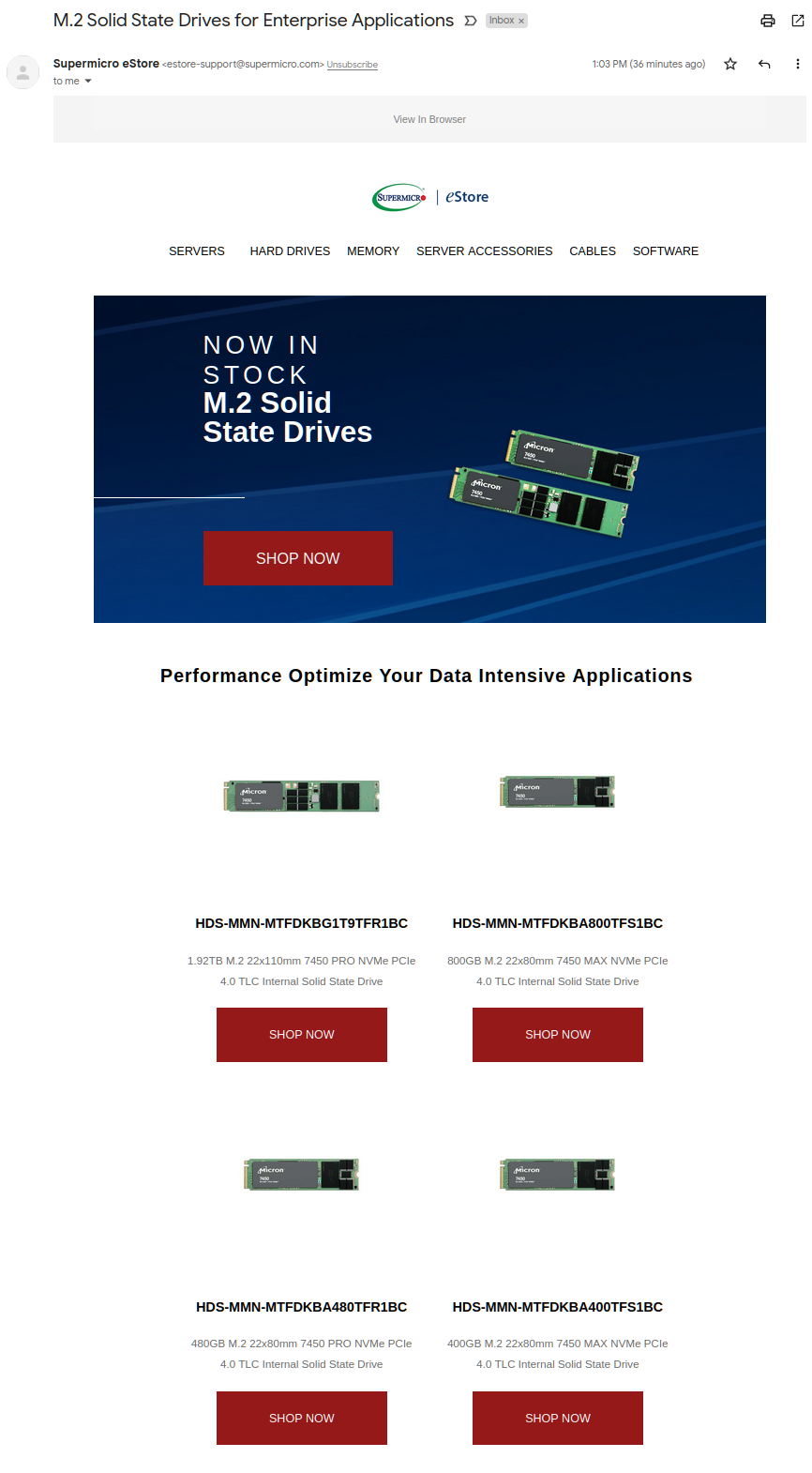Zarathustra[H]
Extremely [H]
- Joined
- Oct 29, 2000
- Messages
- 38,830
I just got this marketing email blast from SuperMicro telling the world they are selling Enteprise SSD's

What stood out to me is that they are calling these "Enterprise Drives", but every last one of them is TLC.
Is that really what is being used in Enterprise applications these days? Maybe I am nuts, but I expected enterprise drives to be at least MLC.
Enterprise has always stayed one level above typical consumer drives. When SSD's first entered the consumer space, they were all MLC, and enterprise drives were SLC.
Now TLC is the most common in the consumer space, and has been for a while, with enterprise drives being MLC.
Sure, QLC exists, but IMHO it's barely good enough for heavy consumer use, and I wouldn't have expected TLC to be good enough for demanding Enterprise applications quite yet (or maybe even ever)
Is that really where we are now?

What stood out to me is that they are calling these "Enterprise Drives", but every last one of them is TLC.
Is that really what is being used in Enterprise applications these days? Maybe I am nuts, but I expected enterprise drives to be at least MLC.
Enterprise has always stayed one level above typical consumer drives. When SSD's first entered the consumer space, they were all MLC, and enterprise drives were SLC.
Now TLC is the most common in the consumer space, and has been for a while, with enterprise drives being MLC.
Sure, QLC exists, but IMHO it's barely good enough for heavy consumer use, and I wouldn't have expected TLC to be good enough for demanding Enterprise applications quite yet (or maybe even ever)
Is that really where we are now?
![[H]ard|Forum](/styles/hardforum/xenforo/logo_dark.png)